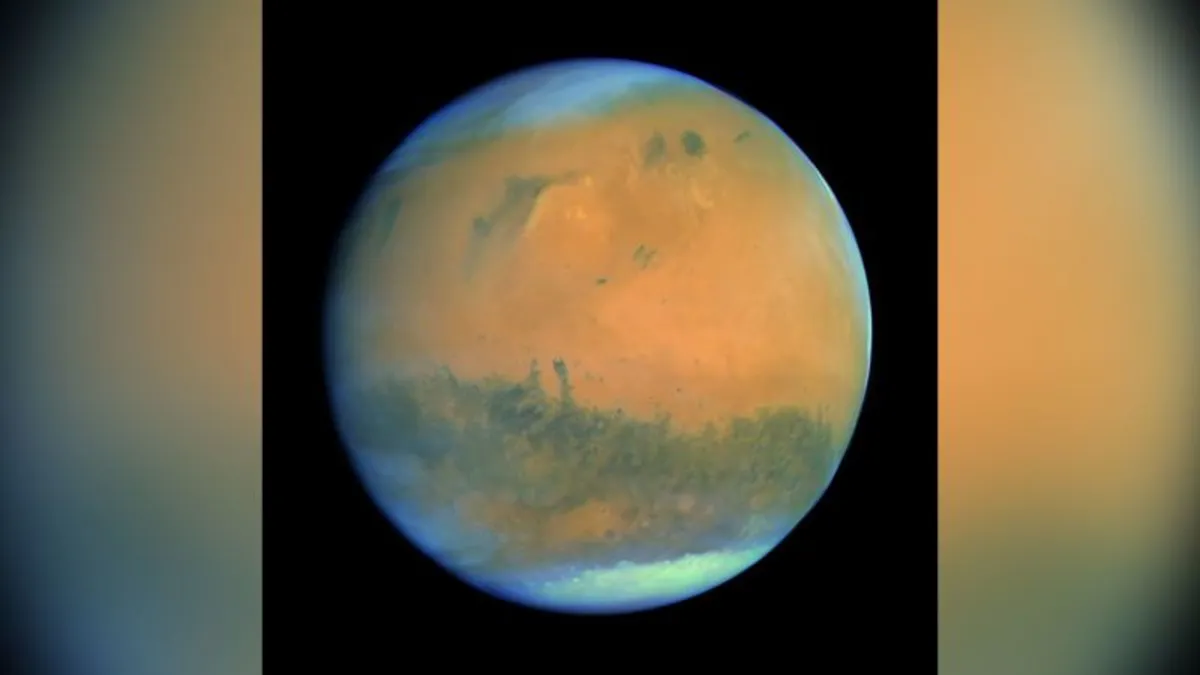
Mars, the iconic red planet, has long fascinated scientists and enthusiasts alike. With its distinctive rusty hue, the planet has been a focal point of research and exploration. Recent studies have uncovered a potential source of this color, challenging previously held theories about the planet's composition and history.
Due to its proximity to Earth, Mars has been extensively studied by numerous spacecraft over the decades. Data from these missions suggest that Mars’ red color is due to rusted iron minerals in the dust covering its surface. This red dust is thought to have formed from iron in Martian rocks reacting with water or oxygen, similar to rusting on Earth.
Scientists believed the iron oxide responsible for Mars' redness was hematite, a dry mineral forming through the Martian atmosphere's reactions. This theory suggested hematite developed later in Mars' history, postdating the planet's potentially habitable past with lakes and rivers.
New research published in the journal Nature Communications indicates that ferrihydrite, a mineral forming in the presence of cool water, may be the true source of Mars' red hue. Unlike hematite, ferrihydrite contains water, suggesting a different narrative for Mars' past.
Lead study author Adomas Valantinas from Brown University stated, “Mars is still the Red Planet. Our understanding of why Mars is red has been transformed.” This finding reshapes our knowledge of Mars' geological and climatic history, hinting at a more water-abundant past.
Understanding the composition of Martian dust is key to unraveling the planet's history. Despite the abundance of dust, its study is challenging due to the tiny size of the particles. Briony Horgan, a planetary science professor, emphasized the difficulty in defining these particles as true minerals.
The new analysis highlights ferrihydrite, formed in cool water, as a likely candidate responsible for Mars' redness. This aligns with the presence of water on the planet's surface before it became inhospitable.
Valantinas and his team utilized data from various missions, including the European Space Agency’s Mars Express and NASA’s Mars Reconnaissance Orbiter. The study combined lab simulations with observational data, offering compelling evidence for ferrihydrite’s role.
The CaSSIS camera on the Trace Gas Orbiter provided detailed images, allowing researchers to recreate Martian dust on Earth. Their findings indicate ferrihydrite mixed with basalt, a volcanic rock, closely matches the minerals observed on Mars.
The study suggests Mars was once more water-rich than previously thought, as the presence of ferrihydrite implies an environment where liquid water existed. This discovery is crucial for understanding Mars' potential habitability and its transition from a wetter state to its current arid condition.
The Perseverance rover has collected samples, and future missions under the Mars Sample Return program aim to bring them back to Earth. These samples will be vital in confirming the presence of ferrihydrite and unraveling Mars' history.
Understanding when and where the dust formed could provide insights into the evolution of early Earth-like atmospheres. As research continues, the mysteries of Mars' red hue and its implications for the planet's past climate and habitability offer exciting avenues for exploration and discovery.